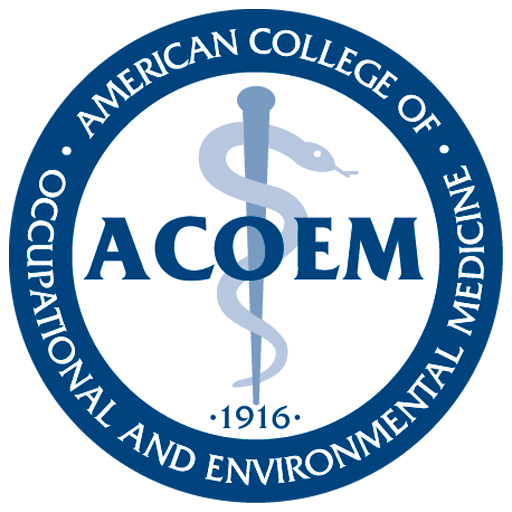
05: Safety In the Workplace Drug-Free Workplace
History of Drugs in the Workplace
During the 1980s, fatalities from the crash of an airplane on the deck of the USS Nimitz (1981) and from the Chase, Maryland, train crash (1987) were attributed to substance use. These events in particular triggered the Reagan administration to propose legislation to ensure that the workplace was drug free. The federal Drug-Free Workplace Act of 1988 and the Anti-Drug Abuse Act of 1988 were followed by legislation and regulation at both the state and federal levels, encouraging and outlining steps to ensure that the workplace remained drug free.
The drug use that these laws attempt to prohibit involves not prescription medications, used as prescribed by the intended individual, but rather illicit, or “recreational,” substances—used for their pleasurable effects—or legitimately prescribed medications diverted from either their intended use or recipient. As a group, these substances temporarily but significantly alter the function of the brain.
For employers, concerns about such substances extend beyond the impairment caused by acute intoxication. Chronic use can also have long-term effects, and with some substances, there is a period after use during which the neurochemistry remains distorted, leaving the individual functioning at a subpar level. Cocaine is an example. During acute intoxication, the individual feels energized, but when the intoxication wears off, the user experiences a significant letdown, exhibiting a sluggish, depressed mental status. The intense tightening of blood vessels, especially those supplying the heart, associated with cocaine use has been seen to result in heart attacks, which can result in permanent impairment and occasionally death. Other substances alter judgment (such as sedatives, stimulants, or some antipsychotics), reaction time (sedatives and some anti-seizure medications), or accurate perception of the environment (hallucinogens). None of these outcomes is beneficial to the well-being or productivity of the workplace or to individuals working in safety-sensitive environments.
Deterrent Versus Detection
Whether workplace-based screening for substance-use functions as a deterrent or a means of detection depends, at least in part, on the consequences suffered as a result of detection. The more severe the consequences of a positive test, the more it is expected to function as a deterrent. Many companies have a policy calling for the immediate termination of an employee who has tested positive on drug screening; others suspend workers from safety-sensitive duties, often for prolonged periods of time. Still other companies, however, are more lenient, asking only that the employee work with a substance abuse professional and undergo increased monitoring. The more severe the penalty, the greater the potential for losing an employee who is valuable and hard to replace. There is both benefit and risk in detection and deterrence; both need to be carefully weighed in establishing a company’s policy on drug screening.
One of the greatest problems in detection is the length of time that the markers of some substances remain in the body. Although cocaine is present in the body for only a short period of time, the benzoylecgonine, the metabolite used for detecting cocaine use, can be present for up to three days after drug use. As for marijuana, the metabolite used to identify it can be detected in the urine for up to a month after the last use. Clearly, these tests fail to document recent use, intoxication, or impairment, instead documenting drug use at some time in the not-too-distant past. These tests differ greatly from breath alcohol, which does indicate recent use and does imply intoxication and impairment.
Because urine, hair, or oral fluid sampling detects any recent use of the substances for which the testing is done, it functions as a deterrent to drug use both in and outside of the workplace. he degree to which such testing deters drug use is related to both the frequency of testing and the consequences of testing positive. The more frequently testing is done, the more likely it is that any use will be detected, and thus potentially the greater the deterrence—as well as the cost to the company. Rapid drug screens are very effective at detecting any drug use and are less costly than more specific tests, but they are also prone to mistake other, legitimate, substances for the targeted drugs. Employment decisions (such as hiring, discipline, or firing) should never be based purely on a non-negative rapid drug screen; non- negative samples should be sent to a lab certified for drug screening, and the screening test confirmed before any steps are taken. In many federally regulated industries, non-negative drug screens must be reviewed by a physician, called a medical review officer, specially trained in handling such results, and the donor of the specimen must be given a chance to provide a medically legitimate reason for a non- negative result. Even those non-negative drug screens not subject to federal regulation should be reviewed by such a professional.
Impact on Productivity
On the whole, use of recreational substances is believed to increase worker absenteeism, “presenteeism” (that is, being present at the workplace but unable to function at full capacity), and injury in the workplace. Clearly, all of these issues decrease productivity and present significant concerns for safety-sensitive tasks, where impairment can increase the risk of harm to self or others.
An excellent discussion of marijuana use in the workplace can be found in the American College of Occupational and Environmental Medicine’s position paper on the subject, which can be found at here: https://www.acoem.org/uploadedFiles/Public_Affairs/Policies_And_Position_Statements/Guidelines/G uidelines/Marijuana%20JointGuidance%202015.pdf
Effects of Legalization of Medical or Recreational Use of Marijuana
At the time of writing, marijuana laws are in a state of flux, with multiple states legalizing it for medical use only and a growing number of states legalizing it recreationally. It is therefore important to be clear about the laws that apply to the place of a provider’s practice, not only for the provider but also for the entity ordering the drug screen. Workers being tested must also be made clearly aware of the corporate policies concerning marijuana. Regardless of marijuana’s legality, in some states, employers can require that their employees be free of evidence of marijuana use as a condition of ongoing employment. In other states, the law forbids workplace policies that regulate outside behavior. Given the persistence of the markers of drug use beyond the point of clear intoxication or apparent impairment, drug testing in the workplace becomes much more complex in those states: blood tests are required to document intoxication or impairment. Determining that a tested individual is intoxicated or impaired also requires agreed-upon standards to indicate intoxication or impairment, something that is lacking for most drugs.
Complicating this issue further, the federal government and its agencies have ruled that certain professions (including pilots, school bus drivers, truck drivers, train engineers, subway operators, aircraft maintenance personnel, transit fire-armed security personnel, ship captains, and pipeline emergency response personnel, among others) must test negative for marijuana use, no matter what state is involved or that state’s laws about marijuana use. For health care personnel seeking to understand these highly variable laws, state departments of public health or legislature websites are a good starting point.
